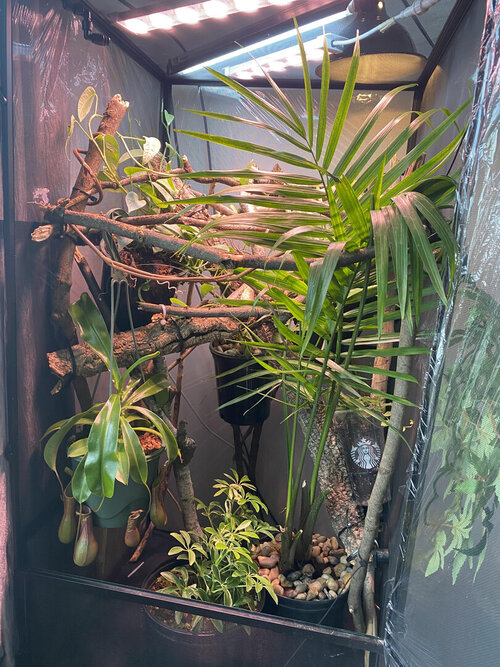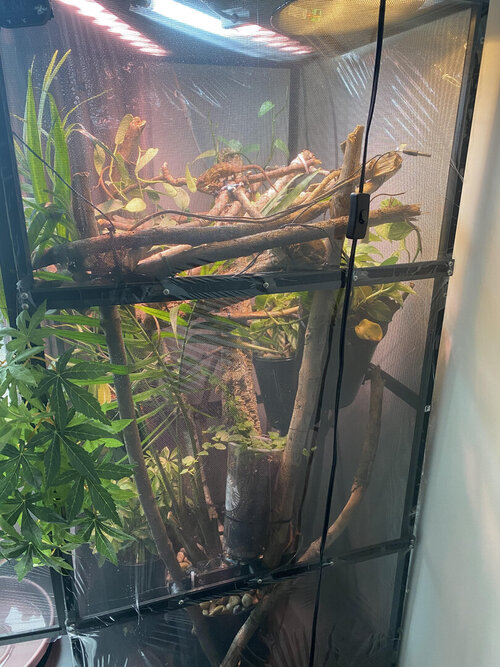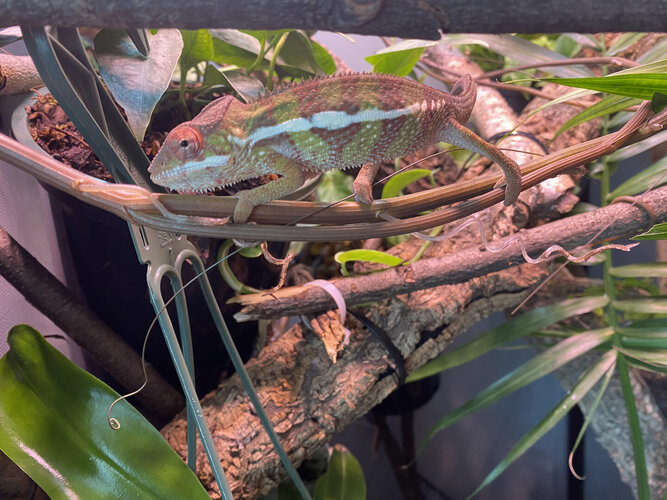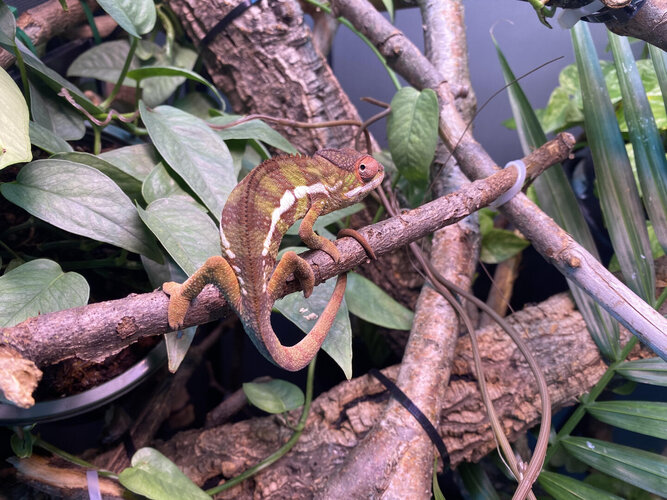Teletubbies
Member
Since my condo switched the AC from cool to heat last week, the humidity level of my chameleon enclosure dropped to 55% at night, the mistking system works 1 min every 1.5h, it could increase the humidity level to 80% but after 30min, the humidity level will be dropped back to 55%. I think my chameleon is fine this week but I'm concerned the low humidity level might cause health issues to my chameleon.
Chameleon Info:
Cage Info:
Chameleon Info:
- 4 months CB Nosy Mitsio chameleon, I got him 1 month ago. I think is male
- Handling - Few times a week
- Feeding - 1/2 cricket and dubia& Surinam roaches, the silkworms and bsfl.I feed him every day around 10 am with 10-12 feeders. I’m using carrot and repashy bug burger to gut loading crickets and roaches.
- Supplements - Arcadia earth pro A every day, Repashy Calcium Plus Low D twice a month.
- Watering - I’m using a mistkingv5.0 system with a single nozzle. The mist settings are 3 minutes at 7 am and 7 pm, 1min mist every 1.5h at night.
- Fecal Description - 2/3 black and 1/3 white no Orange urates, no tested for parasites.
Cage Info:
- Cage Type – Reptibreeze XL,24x24x48, four sides wrapped by window shrink kit.
- Lighting –Arcadia D-3 forest 6% UVB light, 60w basking light and two LED plant grow light
- Temperature - I’m using Zoo Med Digital Combo Thermometer Humidity Gauge to measure the temperature and humidity. The temperature is 86 f at the basking spot, 77f enclosure temperature during the daytime,71.5 f at night.
- Humidity -Daytime 40%-50%, nighttime 55% or lower. I wrapped the front door, back and both sides by window shrink kit.
- Plants - majesty palm, Schefflera arboricola, Cebu Blue Pathos, Pathos Marble Queen, Marantaceae Nepenthes and Climbing Fig.
- Placement -In the corner of my living room, low traffic area.
- Location – Toronto, Canada












